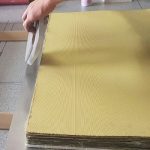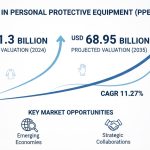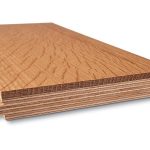Maleic Anhydride Market Analysis: Trends, Growth, and Future Outlook
The Vantage Market Research provides a comprehensive analysis of the Maleic Anhydride market, detailing its current status, historical growth, and projected future trends. With a focus on various regions, including North America, APAC, and Europe, the report highlights key drivers, applications, and innovations shaping the market landscape. The insights presented here are critical for stakeholders looking to navigate the complexities of the Maleic Anhydride industry.
Market Overview and Historical Growth
The Maleic Anhydride Market has witnessed significant evolution over the past decade, characterized by fluctuating demand and supply dynamics. As of 2024, the global Maleic Anhydride market is valued at approximately USD 4,403.1 million, with projections indicating a rise to USD 6,760.2 million by 2035, reflecting a compound annual growth rate (CAGR) of 4.00% from 2025 to 2035.
Historically, from 2015 to 2023, the market has seen a steady increase in demand, particularly in North America, where the U.S. accounted for a significant share of the market. The expansion of the agricultural, automotive, and construction sectors has played a crucial role in this growth. For instance, the total construction spending in the U.S. reached an impressive $1.98 trillion in 2023, marking a 7.4% increase from the previous year. This surge was primarily driven by nonresidential construction, which experienced a 17.6% year-over-year increase, while residential construction faced challenges due to rising interest rates and inflation.
The market has been influenced by several key factors, including the growth of downstream applications such as unsaturated polyester resins (UPR), automotive, and construction sectors. Between 2015 and 2023, the market experienced varying growth rates, largely driven by economic conditions, technological advancements, and shifts in consumer preferences. The demand for Maleic Anhydride surged during periods of economic expansion, particularly in regions with robust manufacturing capabilities.
In North America, the market has been shaped by domestic production capabilities and the influence of external factors such as trade policies and global supply chain dynamics. The APAC region, particularly China, has emerged as a significant player, driven by rapid industrialization and increasing consumption in various applications. Europe has also maintained a steady demand for Maleic Anhydride, although it has faced challenges related to economic uncertainties and regulatory pressures.
The historical performance of the Maleic Anhydride market reveals a complex interplay of supply and demand, with notable fluctuations in pricing and availability. For instance, the market experienced a downturn in Q4 2024, primarily due to reduced demand and oversupply, which saw prices decline by 5%. Conversely, Q1 2025 indicated a recovery phase, particularly in North America, where demand from UPR producers remained consistent.
Projected Growth Through 2035
Looking ahead, the Maleic Anhydride market is poised for continued growth, with an anticipated market size of USD 6,760.2 million by 2035. Several factors are expected to influence this growth trajectory, including increasing demand from key applications, technological advancements in production processes, and the expansion of manufacturing capabilities in emerging markets.
The projected CAGR of 4.00% from 2025 to 2035 underscores the resilience of the Maleic Anhydride market, despite potential challenges such as economic fluctuations and regulatory changes. Specific regional growth forecasts indicate that the APAC region will continue to dominate the market, driven by robust industrial activity and rising consumption in countries like China and India. North America is expected to maintain a stable growth trajectory, supported by advancements in production technologies and a focus on sustainable practices.
In Europe, the market outlook remains cautiously optimistic, with steady demand from the automotive and construction sectors. However, the region may face headwinds from economic uncertainties and evolving regulatory landscapes. Overall, the Maleic Anhydride market is expected to benefit from increasing investments in research and development, leading to innovations in applications and production methods.
Key Industry Applications and Innovations
Maleic Anhydride is a versatile chemical compound with a wide range of applications across various industries. Its primary use is in the production of unsaturated polyester resins, which are essential in the manufacturing of fiberglass-reinforced plastics, coatings, and adhesives. The automotive and construction sectors are significant consumers of these resins, driving demand for Maleic Anhydride.
In addition to traditional applications, the increasing use of Maleic Anhydride as an additive in lubricant manufacturing is emerging as a promising segment. This trend is fueled by the growing demand for high-performance lubricants in automotive and industrial applications. Furthermore, innovations in production processes, such as the fluidized bed method, are enhancing the efficiency and sustainability of Maleic Anhydride manufacturing.
The market is also witnessing advancements in the development of bio-based Maleic Anhydride, driven by the rising emphasis on sustainability and environmental concerns. These innovations are expected to open new avenues for growth and diversification within the industry.
In conclusion, the Maleic Anhydride market is on a path of steady growth, supported by robust demand from key applications and ongoing innovations in production technologies. Stakeholders in the industry must remain vigilant to market dynamics and emerging trends to capitalize on the opportunities presented by this evolving landscape.
Challenges and Competitive Dynamics
Despite the promising growth prospects, the Maleic Anhydride Market faces several challenges. Fluctuations in crude oil prices can significantly impact production costs, as Maleic Anhydride is derived from petroleum. Additionally, trade dynamics and regulatory factors can create uncertainties in the market, affecting supply chains and pricing strategies.
The competitive landscape is characterized by several key players who are continuously striving to enhance their market position through strategic initiatives. Mergers, acquisitions, and expansions are common as companies seek to leverage synergies and increase their market share. Furthermore, innovations in production technologies are crucial for maintaining competitiveness and meeting the evolving demands of the market.
Regional Market Insights
North America
In North America, the demand for Maleic Anhydride is primarily driven by the U.S. market, which accounted for 82.9% of the revenue share in 2023. The expanding agricultural, automotive, and construction industries are key contributors to this demand. The U.S. construction sector, in particular, is experiencing robust growth, with total spending reaching $1.98 trillion in 2023.
Asia Pacific
The Asia Pacific region presents significant growth prospects for the Maleic Anhydride Market. Rapid industrialization and urbanization in countries like China and India are driving demand for construction materials. However, challenges such as regulatory hurdles and competition from alternative materials may impact growth in this region.
Europe
Europe is expected to maintain market stability, with a focus on sustainability and eco-friendly products. The implementation of stricter environmental regulations is likely to shape the market landscape, encouraging the development of bio-based Maleic Anhydride and other sustainable alternatives.
Strategic Developments and Company Moves
Recent strategic developments in the Maleic Anhydride Market include mergers, acquisitions, and expansions among key players. Companies are increasingly investing in innovations in production technologies to enhance efficiency and reduce environmental impact. Competitive strategies among major players focus on product differentiation, sustainability initiatives, and expanding their global footprint.
In conclusion, the Maleic Anhydride Market is on a promising growth trajectory, driven by increasing demand across various industries. While challenges exist, the opportunities for innovation and expansion present a favorable outlook for the future of this market.
☎ Contact Us:
224 W 35th St Ste 500 New York,
USA/Canada Toll Free +1(877) 462-2282
+1(212) 951-1369
✉ Email: [email protected]
🌐 Website: https://www.vantagemarketresearch.com
FAQs
- What factors are driving the growth of the Maleic Anhydride Market?
- How is the Maleic Anhydride Market projected to change between 2024 and 2035?
- What is the significance of a 4.00% CAGR for the Maleic Anhydride Market?
- What are the key applications of Maleic Anhydride in various industries?
![[Market Research Reports] – Research Google News Blog | VMR.Biz](https://www.vmr.biz/wp-content/uploads/2022/12/logo-removebg-preview.png)











